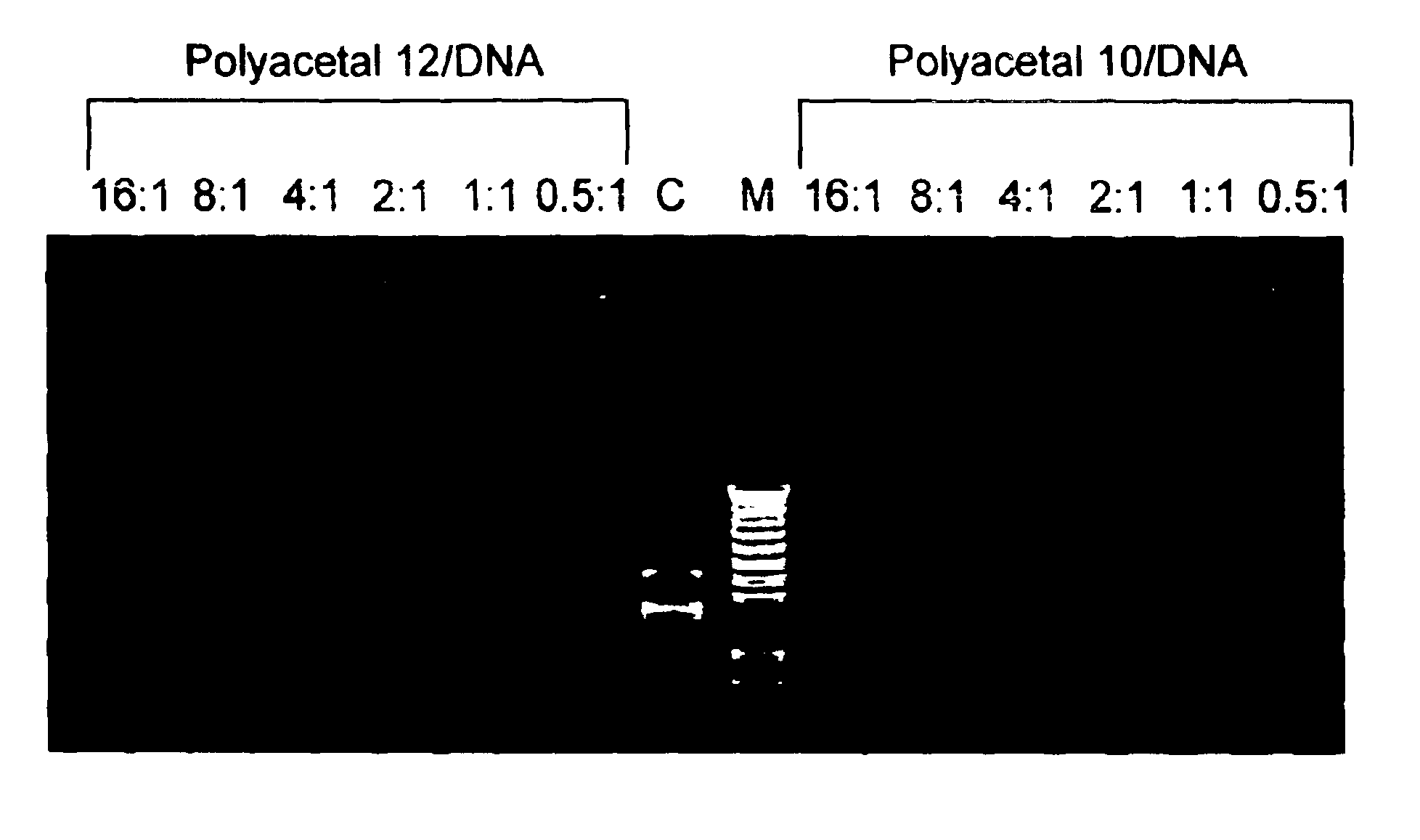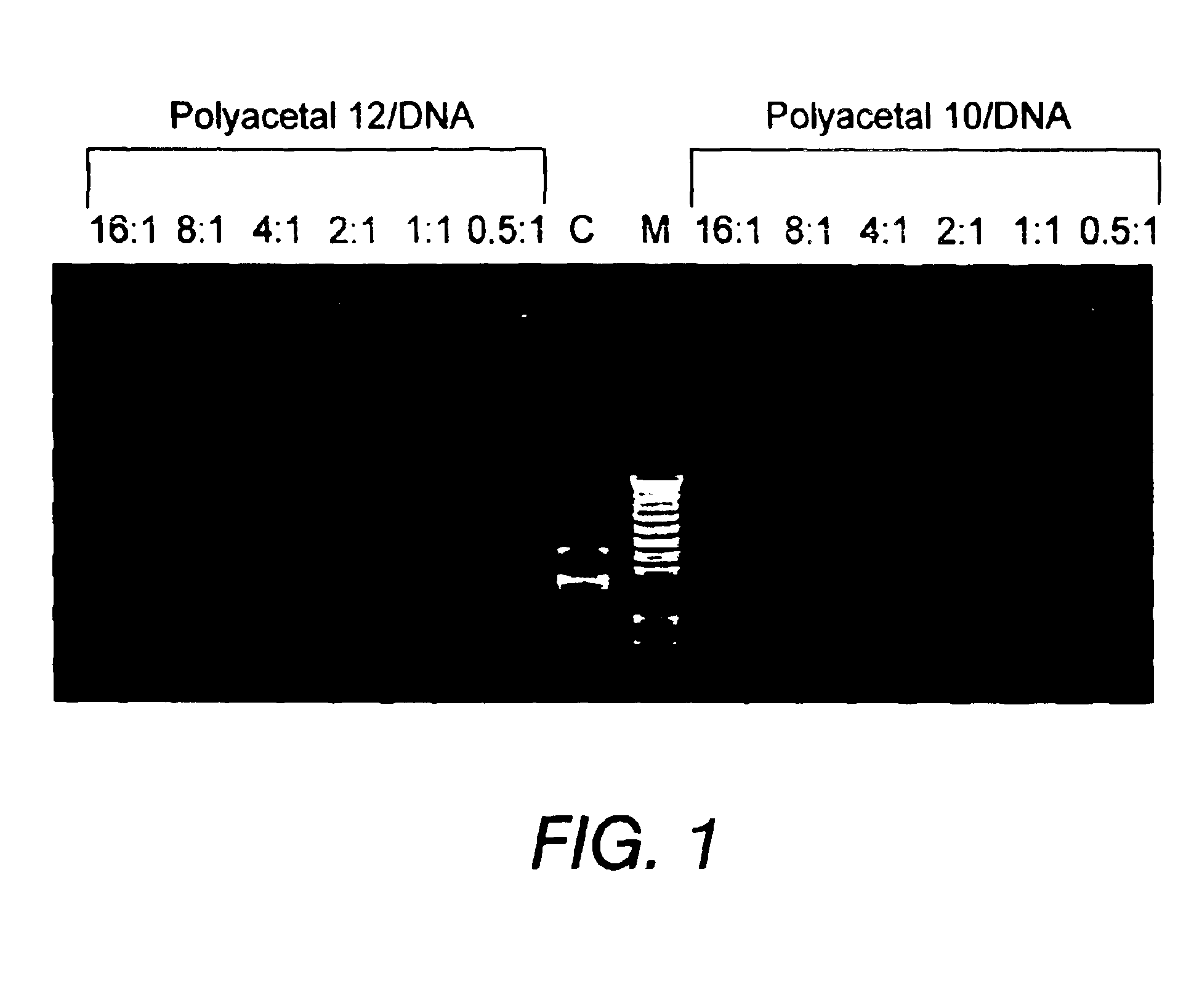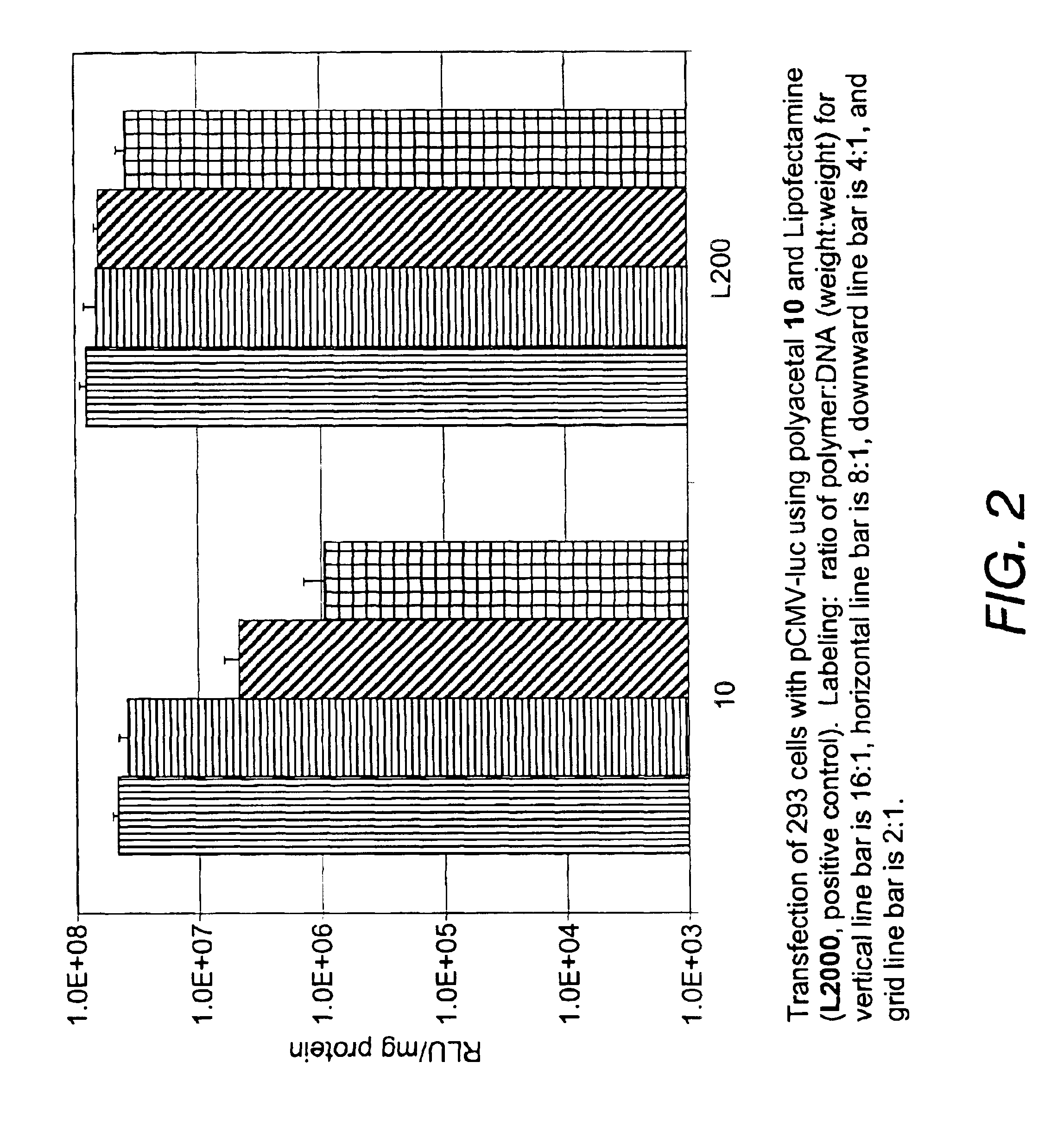Biodegradable polyacetals
a biodegradable, polyacetal technology, applied in the direction of amine active ingredients, amide active ingredients, peptides, etc., can solve the problems of non-degradable cationic polymers such as poly(lysine) and polyethyleneimine (pei) can have significant cytotoxicity, and cationic polymers are susceptible to degradation
- Summary
- Abstract
- Description
- Claims
- Application Information
AI Technical Summary
Problems solved by technology
Method used
Image
Examples
examples
Cell lines and cultures used in the following examples were prepared as follows: Human embryonic kidney cells (“293 cells”) grown in Dulbecco's-modified Eagle's medium (DMEM) containing 10% (v / v) heat-inactivated fetal bovine serum (FBS), 100U / ml Penicillin and 100 μg / ml streptomycin, and incubated at 37° C. at 100% humidity atmosphere containing 7.5% CO2.
GFP plasmids used in the following examples were prepared as follows: Plasmid pCMV-GFP was purchased from Clonetech. The expression of green fluorescent protein (GFP) cDNA is controlled by human cytomegalovirus (CMV) promoter and the transcripts are stabilized by a gene expression enhancer, chicken β-globulin intron. The plasmid vector pCMV-luc was constructed by cloning the firefly luciferase gene into pCMV-0, with the same backbone of mammalian expression vector. The plasmid was expanded in DH5αE. coli and purified with Qiagen Plasmid Max Preparation Kit according to the manufacture's instructions. The quantity and quality of the...
examples 1-4
Polyacetals 6-9 were prepared according to the reaction scheme shown in FIG. 7. The following description for the synthesis of polyacetal 7 is illustrative: Di(ethylene glycol) divinyl ether 2 (1.39 g, 8.76 mmol) and bis-(2-hydroxymethyl)methyl propionate 5 (1.30 g, 8.76 mmol) were mixed in tetrahydrofuran (THF) (10 mL) with molecular sieves (1.0 g) at room temperature and stirred for 20 min. A catalytic amount of toluensulfonic acid monohydrate (TSA, 0.015 g, 0.08 mmol) was added and stirring was continued for four days. The reaction mixture was quenched with sodium bicarbonate (1 mL, 5% in water) or triethylamine (1 mL). Water (10 mL) was added and the organic phase was extracted with ethylacetate (3×10 mL). The extracts were combined, dried with sodium sulfate, filtered, and concentrated by rotary evaporation. The residue was dried under high vacuum to give polyacetal 7 (2.65 g, 8.65 mmol, 98%) as an oil.
examples 5-11
Polyacetals 10-16 were prepared according to the reaction scheme shown in FIG. 8. The following description for the synthesis of polyacetal 10 is illustrative: To poly(ethylenimine) (PEI1800) (30 g, 16.7 mmol) was added a solution of polyacetal 7 (0.5 g, 1.63 mmol) in dimethylformamide (DMF) (10 mL). Additional DMF (10 mL) was added and the mixture was stirred for four days. THF (100 mL) was added to form a precipitate. The precipitate was filtered and washed with THF, then dried under high vacuum to give polyacetal 10 (2.2 g).
PUM
| Property | Measurement | Unit |
|---|---|---|
| molecular weight | aaaaa | aaaaa |
| molecular weight | aaaaa | aaaaa |
| pH | aaaaa | aaaaa |
Abstract
Description
Claims
Application Information
 Login to View More
Login to View More - R&D
- Intellectual Property
- Life Sciences
- Materials
- Tech Scout
- Unparalleled Data Quality
- Higher Quality Content
- 60% Fewer Hallucinations
Browse by: Latest US Patents, China's latest patents, Technical Efficacy Thesaurus, Application Domain, Technology Topic, Popular Technical Reports.
© 2025 PatSnap. All rights reserved.Legal|Privacy policy|Modern Slavery Act Transparency Statement|Sitemap|About US| Contact US: help@patsnap.com



